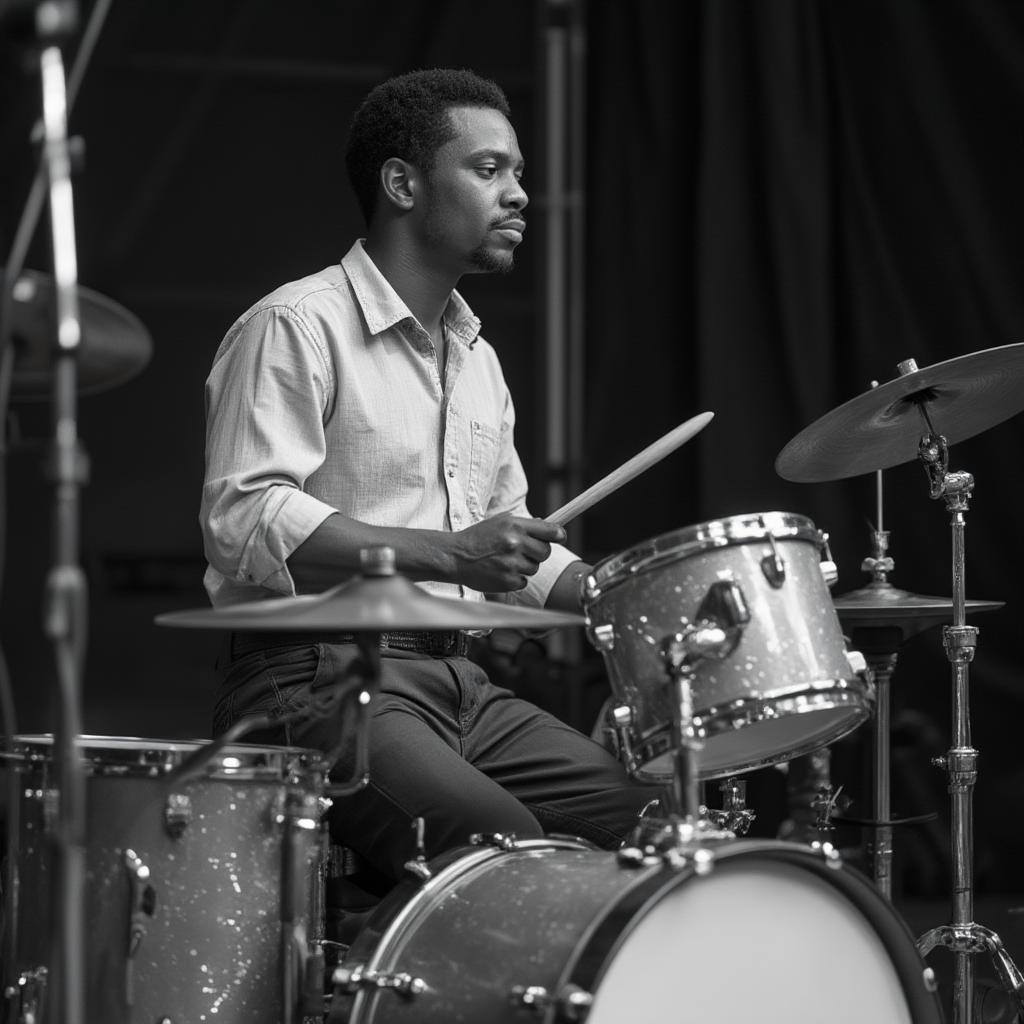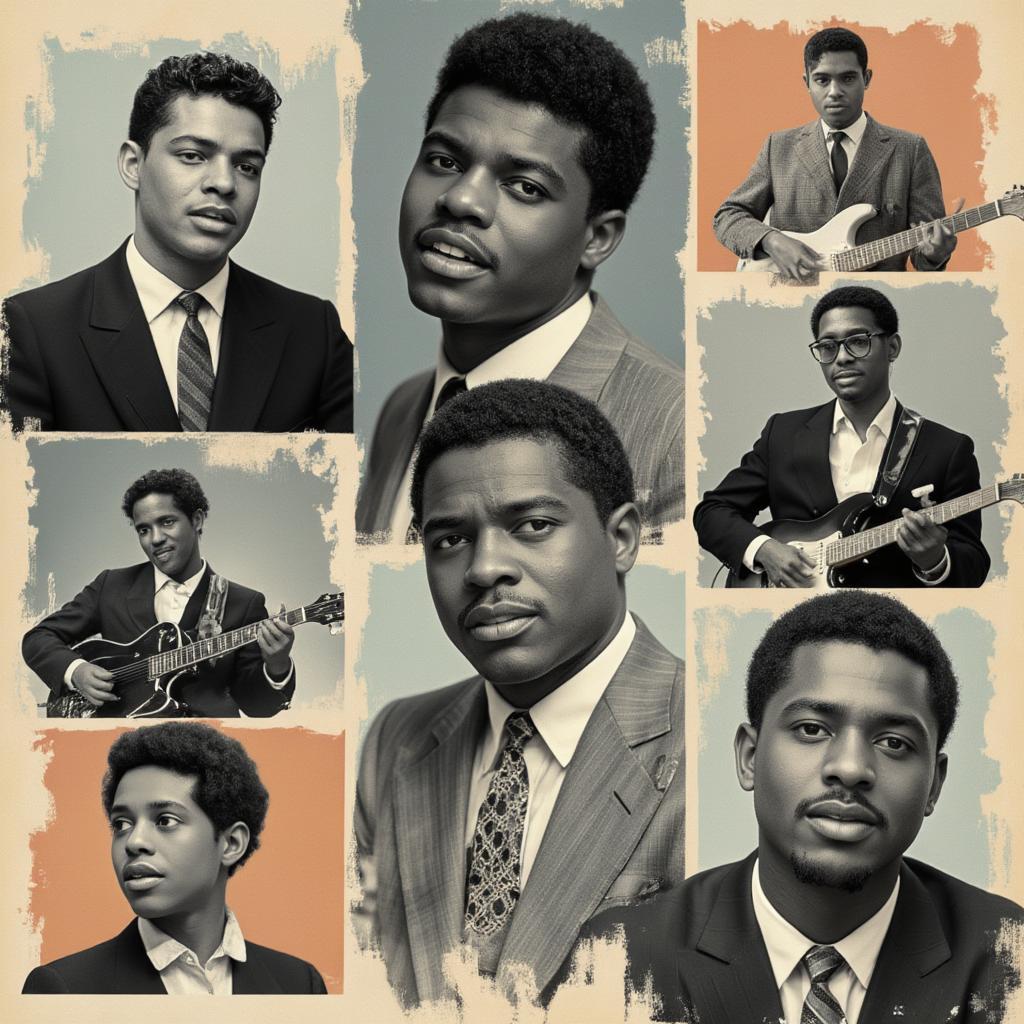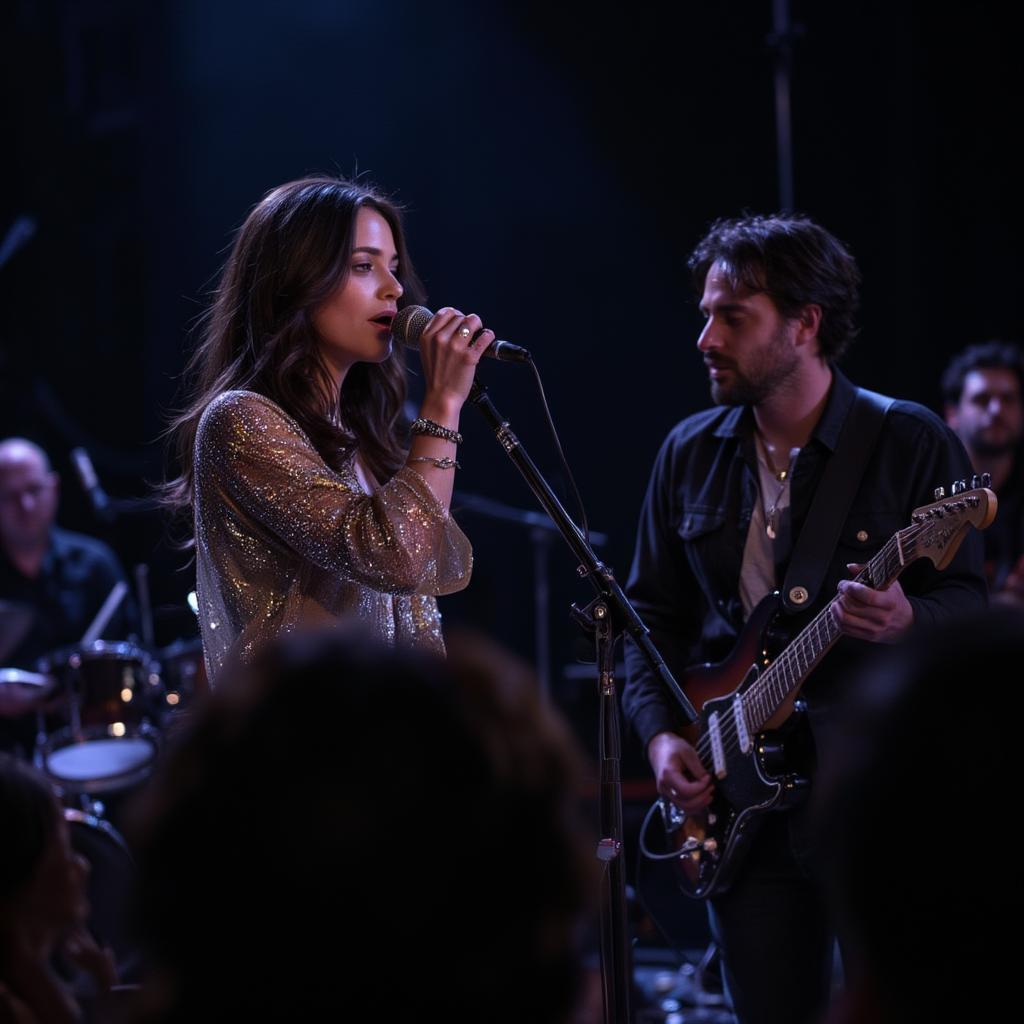Dive Deep: Exploring the Soul of All R&B Music
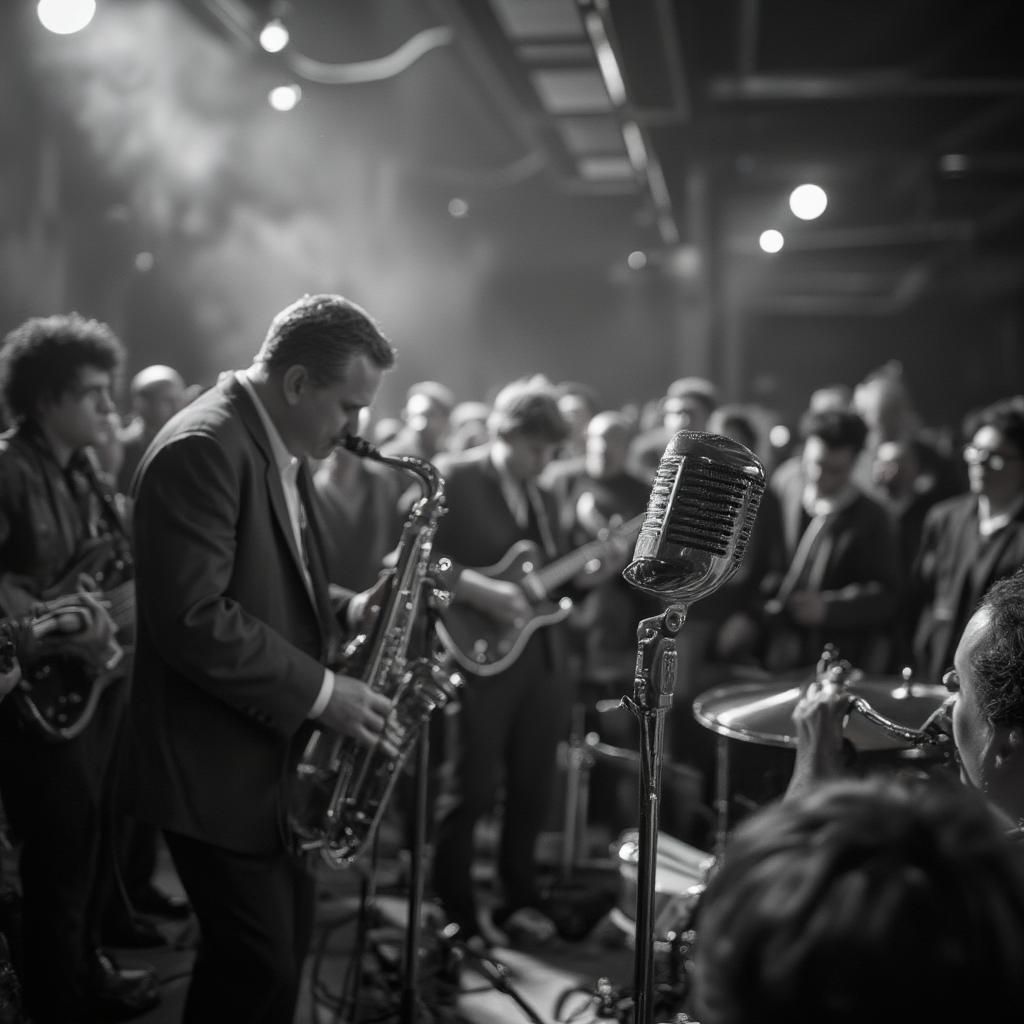
From the smoky backrooms of juke joints to the dazzling stages of global arenas, all r&b music has carved an indelible mark on the soundscape. But what exactly defines this genre, and why does it continue to resonate with generations of listeners? Let’s embark on a journey to uncover the heart and soul of rhythm and blues.
What Is R&B, Really?
At its core, R&B, short for rhythm and blues, is a tapestry woven from threads of blues, gospel, and jazz. It’s more than just a genre; it’s a feeling, a pulse, a raw expression of human emotion through soulful vocals and infectious grooves. Initially emerging in the 1940s, it provided a sonic landscape for Black Americans to voice their experiences, dreams, and heartaches. The music served as both an outlet and a celebration of culture, resilience, and the enduring spirit of the human soul. What started as regional music in the United States quickly transcended geographical boundaries, becoming a global phenomenon.
The Roots of R&B: A Journey Back in Time
To understand all r&b music, we must journey back to its origins. The roots of the genre can be traced to the urban hubs of the United States, where the sounds of blues, jazz, and gospel converged. The Great Migration, which saw African Americans relocate to northern cities, brought these distinct sounds into closer contact, creating fertile ground for the birth of R&B. Pioneers like Louis Jordan, with his jump blues style, laid the groundwork by mixing blues elements with jazz orchestration, creating a lively and danceable rhythm that appealed to a broad audience.

The Evolution of Sound: How R&B Evolved Through Decades
The sounds of all r&b music have evolved drastically over the decades. From the early days of jump blues, we moved into the doo-wop harmonies of the 1950s, with groups like The Drifters and The Platters defining the era. The 1960s brought the soulful sounds of Motown, featuring artists like Marvin Gaye and Diana Ross, which infused R&B with a polished pop sensibility. The ’70s saw the rise of funk, with bands like Parliament-Funkadelic pushing the boundaries of the genre with their psychedelic grooves.
Key Moments Shaping the R&B Landscape:
- 1940s: Emergence of jump blues, a precursor to R&B, with artists like Louis Jordan.
- 1950s: Doo-wop era with groups known for their vocal harmonies and romantic ballads.
- 1960s: Motown era, with its slick production and smooth vocal delivery, becoming a cross-over hit on the mainstream charts.
- 1970s: The rise of funk, which brought heavy grooves, intricate bass lines and a more diverse, almost psychedelic sonic landscape.
- 1980s: The birth of new jack swing, a fusion of R&B and hip-hop beats.
- 1990s: The emergence of contemporary R&B, emphasizing smooth vocals, elaborate harmonies, and production.
- 2000s and beyond: A continued blend of R&B with hip-hop, electronic elements, and other genres, with new artists pushing its limits.
“The evolution of R&B is a testament to the genre’s adaptability and resilience,” shares Dr. Eleanor Vance, a renowned ethnomusicologist. “It has never been stagnant, always absorbing and transforming influences to create something new and exciting. The ability to evolve has helped the genre remain relevant.”
The Elements of R&B Music: What Makes It So Special?
What are the key ingredients that make all r&b music so captivating? Let’s break down the elements that come together to create that unique sound.
The Vocals: From Soulful Croons to Powerful Belting
The vocals are often at the heart of R&B. Whether it’s a smooth, soulful croon or a powerful, emotive belt, the vocal delivery in R&B is distinctive. R&B vocalists often showcase their range, using melisma, riffs, and runs to add depth and feeling to their performances. The emotional expression is a key element, making the listener truly connect with the story being told by the artist.
The Rhythm: Syncopation and Groove
Rhythm is what gives R&B its infectious quality. Syncopation, the use of off-beat accents, adds a complex feel to the rhythm that makes you want to move. Bass lines are often prominent, providing a grounding, driving force to the groove, while the percussions work in tandem to create an ever engaging rhythmic tapestry. The feel is about more than just keeping the time; it’s about creating a mood and a movement that is inherent to the R&B experience.
The Lyrics: Telling Tales of Love, Life, and the Human Condition
R&B lyrics are known for being honest and relatable. They often explore themes of love, relationships, heartbreak, and life’s everyday struggles. The lyrics can be poetic, sensual, or reflective, always carrying a sense of emotional truth. These storytelling elements make R&B songs incredibly personal and meaningful to the listener.
The Instruments: A Variety of Sounds
While a typical R&B song might feature standard instruments like guitars, bass, drums, keyboards, and horns, the way they are used is what makes the difference. The use of effects, synthesizers, and electronic elements has expanded the palette of sounds in recent decades. R&B has never shied away from experimentation, always pushing the sonic boundaries and incorporating new influences into the genre.
The Influence of R&B on Other Genres
The influence of all r&b music is undeniable. Its impact can be felt across a wide range of genres, proving its enduring legacy and versatility.
R&B’s Role in Shaping Pop Music
Many of today’s pop hits have their roots in R&B. The vocal stylings, the song structures, and the use of rhythm and melody have all been borrowed from R&B. Artists like Beyoncé, Usher, and Rihanna have successfully blended R&B with pop elements, bringing its soulful core to a wider audience. Pop has embraced R&B’s emotional depth and rhythmic sophistication, creating a genre that has resonated globally.
R&B and Hip-Hop: A Dynamic Partnership
The relationship between R&B and hip-hop is a dynamic one. From early hip-hop samples of R&B classics to modern collaborations that blur the lines between the two, R&B has become an integral part of hip-hop. The soulful vocals and smooth melodies of R&B provide a great contrast to the rhythmic drive of hip-hop, creating a unique musical fusion. The two genres continue to evolve in parallel, each informing the other in profound ways.
“The cross-pollination between R&B and hip-hop has created some of the most exciting and innovative music of our time,” says music critic, James Harrison. “It’s a testament to the power of these genres to adapt and create something new while staying true to their roots. The back and forth pushes both genres forward.”
Other Genres Influenced by R&B
The impact of all r&b music extends to rock, country, and even electronic music. Its influence can be heard in the soulful vocals, the rhythmic structures, and the emotional expression of countless artists across all genres. R&B has become the essential ingredient in crafting music with depth and authenticity, giving it a timeless quality.
Why Does R&B Still Matter Today?
In a world of ever-changing musical trends, the question arises: why does all r&b music continue to matter? The answer lies in its ability to speak to universal human experiences, offering comfort, understanding, and connection.
A Timeless Soundtrack to Life’s Journey
R&B continues to provide a soundtrack to the ever-evolving human experience. Its songs capture the complexities of love, loss, joy, and sorrow, resonating deeply with people of all ages. From romantic ballads to soulful anthems, R&B offers something for every mood and phase of life. The emotional honesty found in R&B is what sets it apart, continuing to captivate new generations of listeners.
The Legacy of Black Artistry
All r&b music represents the cultural richness and resilience of African American artistry. Its impact extends beyond just entertainment; R&B is a powerful form of expression that has shaped society and music itself. Supporting and appreciating R&B is a way of honoring the legacy of its creators.
A Voice for Expression and Change
R&B has always been a platform for artists to express themselves and address social issues. From the Civil Rights movement to today’s discussions of social justice, R&B has been at the forefront, using its powerful voice to challenge norms, inspire change, and speak out for the voiceless.
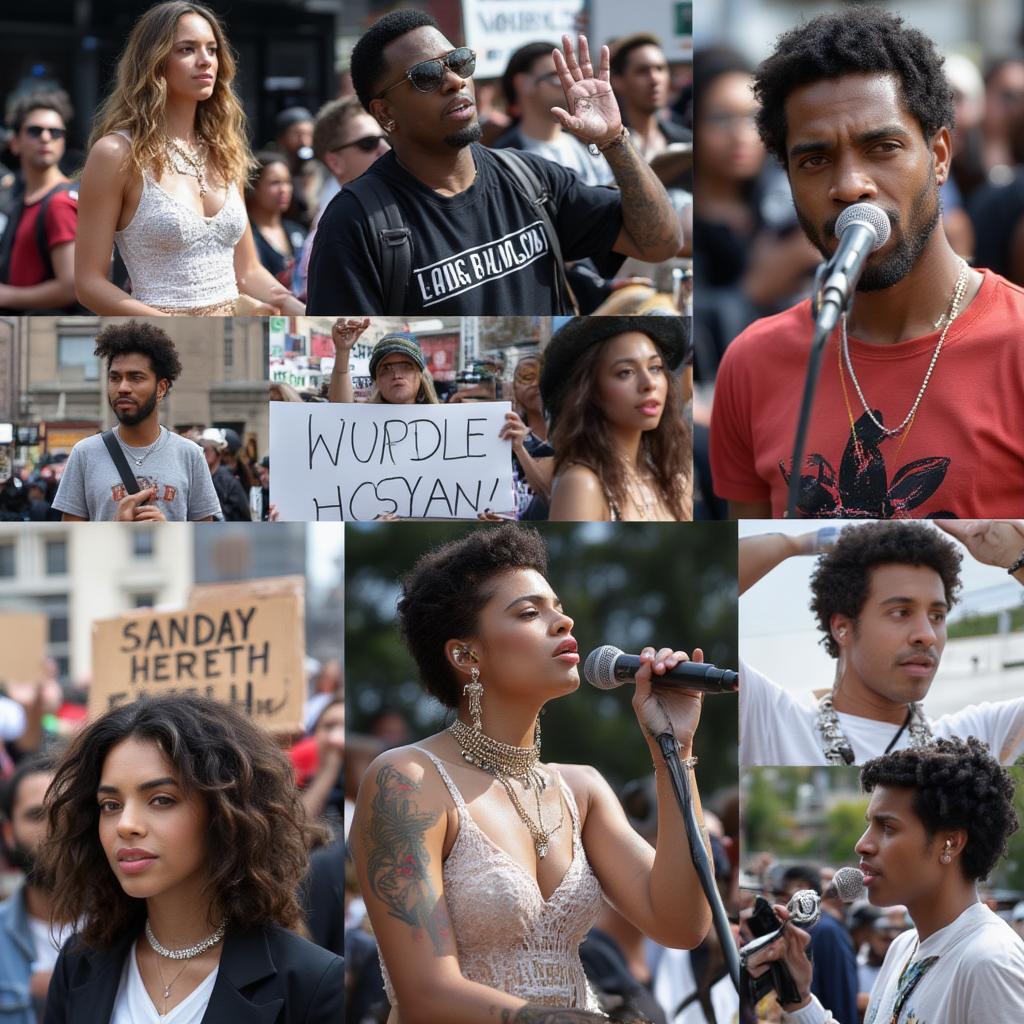
Keeping the Blues Alive at Shock Naue
all r&b music beats strong, with every note resonating with the raw truth and authenticity that has made the genre so beloved. We keep the blues alive by letting it fuel everything we create.
Conclusion
All r&b music is an ever-evolving genre with deep roots in history and a profound influence on the music landscape. It’s a testament to the power of emotional expression, rhythmic innovation, and the enduring human spirit. Its timeless qualities ensure that it will remain a vital force for generations to come, continuing to shape the sound of music itself.
FAQ: Exploring the Depths of R&B
1. What exactly does R&B stand for?
R&B stands for Rhythm and Blues. It is a genre of popular African-American music that originated in the 1940s and 1950s, growing out of blues, jazz, and gospel. R&B has since evolved significantly, with its core focus remaining on soulful vocals, heartfelt lyrics, and rhythmic beats.
2. How does classic R&B differ from contemporary R&B?
Classic R&B, often characterized by its Motown sound with a strong emphasis on vocal harmonies and classic instrumentation, has its foundations in jazz and blues, whereas Contemporary R&B typically blends elements of soul, funk, hip-hop, and electronic music, with a greater focus on production and new sonic elements.
3. Who are some of the most influential R&B artists of all time?
There are many influential artists, but some of the key figures in R&B history include Aretha Franklin, Ray Charles, Marvin Gaye, Stevie Wonder, and Etta James. Each of these artists has left a lasting impact on the genre through their unique styles, vocal abilities, and timeless songs.
4. How has hip-hop influenced R&B, and vice versa?
Hip-hop has significantly influenced R&B by introducing new rhythms, production techniques, and lyrical themes. Simultaneously, R&B has influenced hip-hop with its soulful vocals and melodies, making for a reciprocal relationship, leading to the evolution of the sound.
5. What are the main musical elements that define R&B music?
The main elements include soulful vocals, syncopated rhythms, a prominent bassline, emotional lyrics, and a mix of instruments like guitars, keyboards, drums and, horns. The focus is on creating a groove that’s both compelling and emotionally resonant.
6. Why is R&B such an important genre in music history?
R&B is important because it gave rise to rock and roll, pop, and other genres. R&B provided a platform for African American artists to express themselves. The music also played a vital role in the Civil Rights movement as a catalyst for social change and cultural expression.
7. What are some common themes explored in R&B lyrics?
Common themes in R&B lyrics include love, heartbreak, relationships, social injustice, and personal struggles. R&B lyrics are notable for their emotional depth, vulnerability, and storytelling elements that resonate with a wide audience.

